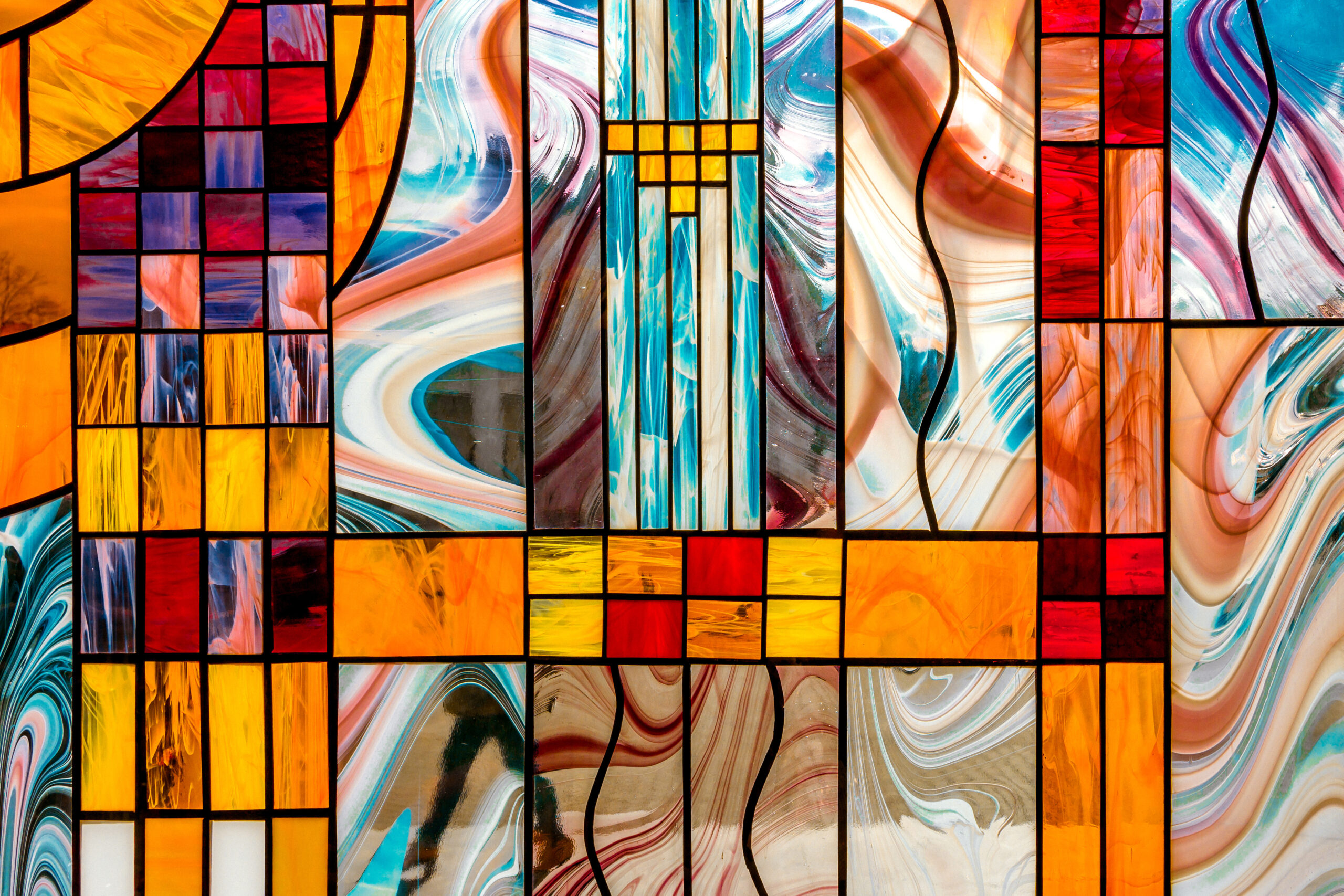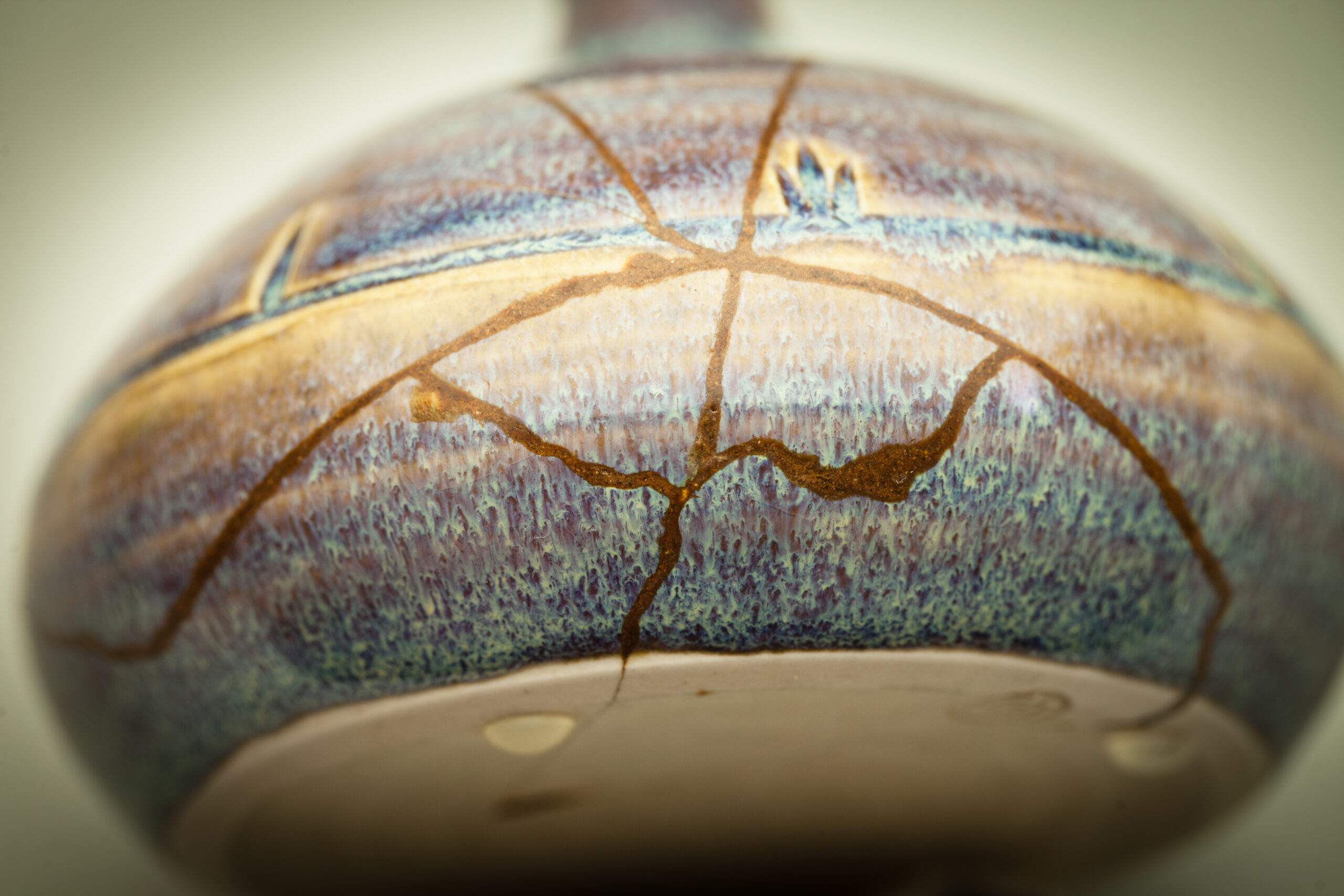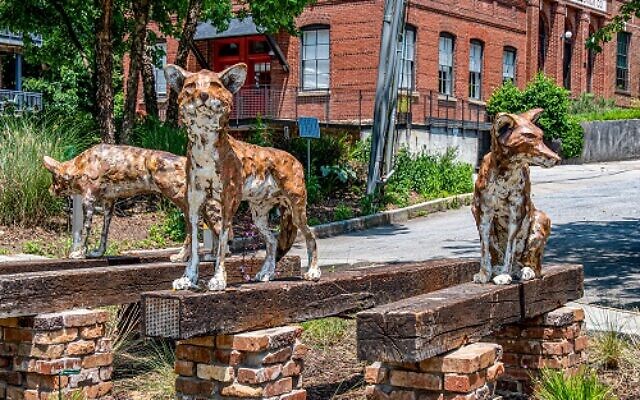Katie Steedly’s first-person piece [The Unspeakable Gift] is a riveting retelling of her participation in a National Institutes of Health study that aided her quest to come to grips with her life of living with a rare genetic disorder. Her writing is superb.
In recognition of receiving the Dateline Award for the Washingtonian Magazine essay, The Unspeakable Gift.
Enter your email here to receive Weekly Wide-Awake
Marathon
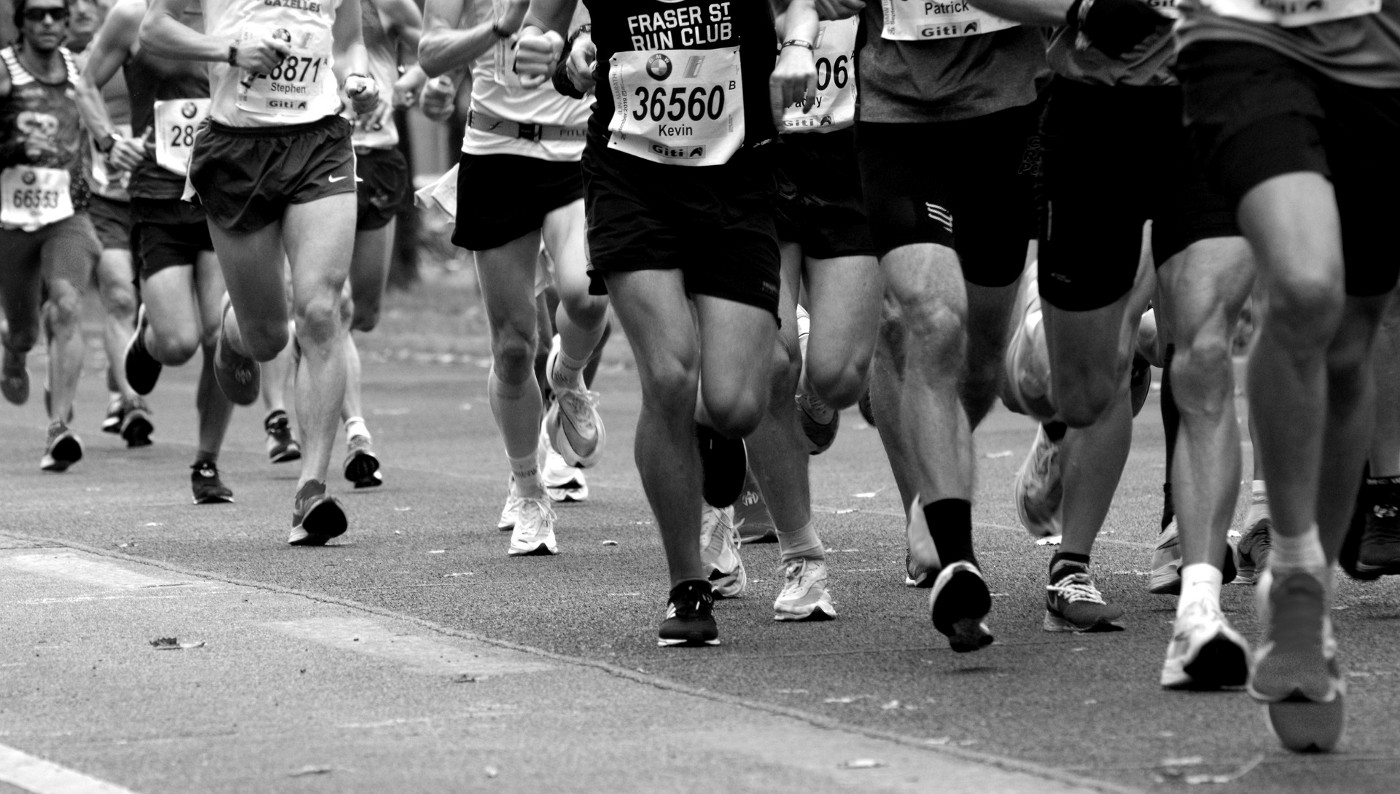
“The music of a marathon is a powerful strain, one of those tunes of glory. It asks us to forsake pleasures, to discipline the body, to find courage, to renew faith, and to become one’s own person, utterly and completely.”
-George Sheehan
Doing a marathon was on my “before I am thirty” list. I was twenty-nine and had not run a timed mile since high school. I weighed thirty pounds more than I did at that time. I got winded when I walked up a flight of stairs and did not own a pair of running shoes. Despite all that, on December 18, 1999, I registered to compete in the San Diego Rock-N-Roll Marathon. The 18th was significant because it was the anniversary of the day I resigned from my high school teaching job. I wanted to reclaim it as something powerful and positive while also making good on a “before I am thirty” promise to myself. Home in Indiana after a tough semester in Austin, I sat on the couch at my parent’s house and explained I wanted to do a marathon. They responded with support, well-masked doubt, and a healthy amount of concern.
I had watched in terror while my father trained for and completed a marathon years earlier. I remembered the finish line with ambulances and EMTs helping vomiting people. I remember asking my father never to do another marathon. I knew what I was getting into and moved forward full steam ahead. I signed up to train and compete with the Leukemia Society Team in Training. That meant I would commit to a six-month program that included weekly training with a coach and team, prescribed daily workouts, raising money for the Leukemia Society, and competing in the 26.2-mile test of will.
My fitness regimen before setting this goal included brief and intense affairs with step aerobics, power walking, body sculpting, “butts and guts,” and both the Abs and Buns of Steel video series. I was enthusiastic and dedicated, but my VHS tapes were lost in boxes. My ego wanted to wear a bikini, but my waistline screamed in fright, and my thighs resembled cottage cheese. I wanted to reclaim my body.
I had never been on a team. Always the last one picked for any sport in gym class, participating in sports alongside others seemed potentially embarrassing and scary. Having been a theatre person my entire life, I told myself it was like being in the cast of a play. I have experienced the bond that forms when you work hard toward a common goal, and this could be a way to get fit and connect with people, too. I knew the accountability of a group would provide additional motivation when I did not want to put my shoes on and get out the door. The friendships that form during a physical process are perhaps the most honest and enduring I have ever experienced. I wanted to have that again.
The notion that I would do a marathon for a cause was also a motivating factor. It felt essential to tie this endeavor to something bigger than myself. I did not know much about leukemia, but I knew the team training process involved being paired with an “honored team member” from whom I would learn.
Training started with an all-team kickoff meeting. Everyone who would be competing from the Austin area met to learn about the specifics of the program. The Central Texas office of the Leukemia Society organized the program. The head of the office stood at the front of the room alongside the coaches and welcomed us. He was sporty. The coaches also looked fit and enthusiastic. There were three or four running coaches and one walking coach. I had registered for the walking program.
We were given a training packet that spelled out, in detail, how we would prepare our bodies for the race over the next six months. The packet provided a day-by-day breakdown of activity. There was a gradual build of intensity toward race day. Our training initially involved a run/walk of thirty minutes four times a week, a long run/walk of fifty minutes on the weekends, and one cross-training day. Before tapering off before the race day, we would have to run/walk for fifty minutes four days a week and do a four-hour training run/walk.
Fundraising was also part of Team in Training. The Team in Training leadership developed strategies to help us meet our fundraising goals. They would pay for our airfare, hotel, and race registration if we met our goal. Letter campaigns, events, canvassing, buckets at football games, and sponsorships were discussed as potential sources of support. The fundraising piece was presented as a fun way to engage our friends, family, and community in finding a cure for blood cancers.
At this meeting, we also met honored team members, leukemia survivors for whom we would be competing. My honored team member was a five-year-old angel with Shirley Temple curls. Her name was Katie, too. I was given a plastic bracelet,with her name on it, that I would wear as I trained and raced. Looking at her, I could not help but be inspired — she had known such pain in her short life, nothing I would confront in this program would ever compare to that. I resolved to let her strength inspire my effort. Runners and walkers alike heard testimonials and shared initial fears that evening.
Our training started at 7:00 on a brisk Saturday morning at a high school track. My coach’s name was Walt. He was an aging surfer who split his time between yoga, spinning, biking, swimming, and professional Iron Man triathlons. We learned very quickly the seriousness of our endeavor. We were now athletes. Our training schedule was to be followed. We were to show up on time, dressed ready to train, and give 120 percent.
Being on the walkers’ team did not mean I would only walk. In Walt’s world, walking was anything between a ten- and twelve-minute mile. I had never even thought about how fast a mile should be done. The walkers’ team comprised women between the ages of twenty-five and fifty-five of varying fitness levels: hippies, government lawyers, teachers, graduate students, and full-time moms.
Our first practice started with a warm-up mile, 4 laps around the track. As each walker finished the warm-up, Walt told us to keep moving until everyone was done. Once everyone finished, we lined up and he told us he was going to time our fastest mile. He wanted to have an idea of where we were starting and get an idea of how hard we were willing to push ourselves.
The mile started so quickly I did not have time to really think about it. Before I knew it we were rounding the first turn. Most of the group power-walked, but I tried to run. That put me with the lead group, for a brief moment. As we started the second lap around the track, it was evident that I could not keep up with the leaders. They began to pull away. Their breathing remained easy. Their strides were still light, while mine began to look as if I was wearing leg weights. By the third time around, my sides started to ache and my shins burned. On the fourth lap, Walt encouraged us to “have nothing left over,” and I didn’t. I finished my first fastest mile in 11:30.
Practice always started with a warm-up mile. Once we warmed up, we would stretch. Then we would climb stairs, lunge backward and forward, squat up and down, sprint, race around cones, and jump rope. Walt said he could tell if we were training during the week by how well we did on the weekends. If we improved, he believed we were doing the weekday work. If we did not, he would tell us to work harder. Practice always ended with a “fastest mile,” followed by yoga.
Yoga allowed us to learn about a different kind of strength. After a tough workout we would stretch and breathe. Often lying down on the high school football field, we would feel the damp morning grass in Savasana. Our eyes open, ourchests rose and fell against the earth. Our pulses slowed. Our muscles eased as we extended and stretched our legs. We ended each training session returning to an awareness of our body that somehow restored the energy that had been tested and exhausted.
My best Team in Training friend was Angie — a mortgage-loan officer/middle school math teacher/track and volleyball coach. We immediately bonded. A leukemia survivor and previous marathon finisher, she exemplified strength. We trained together, but she would be competing in the Vancouver marathon that would occur about a month before mine. Her teenage foster daughter trained with us and kept the program in perspective with her spirit and humor. Angie took me line dancing, and tubing on the Frio River, and explained things like dry-rub barbeque. She was my training partner and my Texan translator.
We often went for breakfast tacos after Saturday training. One morning I asked her, “What will the race be like?” She explained she had done her last marathon after leukemia treatment, so her experience was probably different. It pushed her to the point of complete exhaustion. She told me to practice eating Goo and drinking water while moving. She told me the Team in Training program, if one follows the training schedule, really gets you ready. That piece of knowledge made me feel better.
I started visualizing the finish line that morning. What would it feel like? Who would be there? Would there be people throwing up all around? Would rock-n-roll bands be playing? I knew I would finish, and I wanted to have an image of the moment on which to focus as I trained and prepared. My legs would be tired. My stomach would probably hurt, but I would still be hungry. I would probably have to go to the restroom. The San Diego sun might be a bit hot. The salty taste of sweat would make me really thirsty. I would definitely want to eat a banana.
Austin is perpetually sunny and temperate, so training happened outside on tracks and trails. I had lived in Austin for three years and never really ventured outside the university at that point. I had never discovered the nooks and crannies in which we trained. We ran on hills outside of town, on downtown urban trails, and in parks next to highway overpasses. I reconnected to the love for the outdoors that I had known as a child.
My favorite trail — Town Lake Trail — ran through downtown Austin. The trail winds around a section of the northern Colorado River that separates downtown from South Austin. The trail is a thirteen-mile loop, divided into small sections by bridges and a dam that connects otherwise segregated parts of Austin. I started running the three-mile loop early in the training program before the bluebonnets were beginning to bloom. If I ran in the evening, I could time my run to see the bats fly out from under the bridge. If I ran in the morning, I saw Ann Richards, one of my political heroes, walking along the path. If I did the three-mile section, I enjoyed Zilker Park. If I kept going and did the five-mile section, I saluted the statue of Stevie Ray Vaughan. The ten-mile section would take me to East Austin.
As the race grew near, we started training on hills more frequently. One particular training site was at a hilly U.S. Army Reserve facility. We ran the hills and raced the straightaways. Walt followed us on his bike, just as he would during the actual race, encouraging us to keep our heads up, remember to breathe, and just keep moving. He told us to reach deep when our legs cramped, our sides felt like splitting, or we found ourselves bent over. By this point, we were up to five miles during our group workouts. Our long runs were ten to twelve miles. Angie and I did long runs together on our days off from training with the team. We pushed each other. There was no stopping, doubting, or worrying, there was only improving our times and strengthening our bodies.
The last Team in Training workout before the race was an important day. It was not our most rigorous workout, but it was meaningful. After some basic interval training, we moved to a yoga studio to practice breathing and relax our nerves. Walt knew we were physically prepared, and now he needed to make sure we were mentally focused.
That day he took us through a series of poses that focused primarily on stretching and breathing. Walt’s voice was calm and measured. We sat on our knees and breathed in and out. Our eyes were open and we looked forward with a thousand-mile stare. He taught us “sun salutation; he taught us warrior pose; he taught us the connection between our minds and bodies. He told us we were ready.
We traveled to San Diego as a team, the day before the race. My parents also traveled to San Diego that same day to support me. We had been to the zoo and walked through Balboa Park, which was where the race would start, and my dad suggested we drive the route to get an idea of the hills and distance. My nerves started to kick in as we drove, drove, and drove. I asked my dad to do the race with me. He did not skip a beat and said he would. As an avid runner, he nevertravels without his running gear. Knowing my estimated finish time predicted significant walking, he knew he could finish the race at my pace. My mom would be at the finish line.
Race day arrived. We had to leave the hotel at 6:00 a.m. Starting groups had been assigned to “corrals” by anticipated finish time, so there was an order to the start for the 21,000 runners who would race that day. My team met in the hotel lobby. I wore the bright purple Team in Training singlet that identified me as one of the thousands of Team members from across the country. I was nervous, but ready with my sunscreen, “Goo,” Advil, and Kleenex. My dad gave me his bright orange Runs for the Arts hat for good luck.
I could barely hear the national anthem from our place at the back of the pack. The starting pistol sounded and my team waited for the first group to start. We waited. The second group started, and so on. We waited and waited and then, all of sudden, we started to run. One foot in front of the other, that is how the marathon started.
I came out of the gate fast. The rest of my team hung back. Dad kept saying, “There are two races, you have to conserve your energy.” He told me the first thirteen miles were just a warm-up for the second thirteen. I was feeling good and did not listen. The first part of the race was through the park with lots of trees and sloping hills; it reminded me of Austin. It was still cool, probably fifty degrees or so, and our bodies hadn’t heated up yet.
The sun emerged during the next part of the race, and the landscape changed from bucolic park to dense urban neighborhoods with convenience shops, restaurants, and some apartments. I drank water at the first stop without missing a beat. No problem. I noticed a woman peeing behind a dumpster. I told my dad I would not ever do that. We kept going. The dense, urban hilly area flattened onto the street that would lead us down to the beach. We passed our first rock band. We reached our next water stop. I drank again. I passed under the showers that were misting cool water and ruined my Kleenex. Paramedics called out to ask us how we were doing. We were doing fine.
Mile six crawled into mile ten. One hour turned to three. We passed more bands, more Porta-Potties, and more water stops. The concentration of the large field of runners had long since dissipated. I had to use the restroom. We stopped at a Porta-Potty and the stench made me sick, so I peed behind the stall. I saw my arms, chest, and legs turning bright red. My sunscreen had been washed off in the misty showers placed along the way.
We passed mile thirteen, the halfway point. We passed SeaWorld. The elite runners had already made the loop of the course and headed to the finish. My body felt the heat of the afternoon sun they would never know. As we watched them run, I took my first dose of Advil and sucked Goo from a small metallic packet. Rock bands played. Water stops began to be beacons of hope. The clock ticked. We were passed by a group of people dressed as a Subway sandwich. Their red hats sat atop a synthetic tube resembling the paper used to wrap sandwiches. Despite all that, I could tell they were fit, so it did not bother me too much that they left us behind. Walt passed us on his bike, offering encouragement and shouting our estimated finish time based on our current pace. The Advil kicked in. A fit man in a fat Elvis suit also passed us at about that point. We laughed and kept going.
I “hit the wall” at mile seventeen. We had made it around the beach, but the rest of the course still had to be conquered. There would be a moment when our bodies had been through so much that we would be exhausted, but we would still have a long way to go. It was at that moment we had to dig deep. It was about core strength. It was supposed to happen around mile twenty-one, but it was already happening for me.
It had taken us more than four hours to reach that point in the race that the bands had stopped playing. Canned music was being piped through a sound system. At a moment of particular weakness for me, the Glenn Campbell song “Gentle on My Mind” began to ring through the speakers. Blisters were forming on my toes, and a sharp pain felt like a knife in my stomach—there was nothing gentle about that moment.
I sat down on the side of the road and wept. I was nauseous, and I did not have the energy to throw up. My fingers were swollen and unrecognizable. White deposits of crystallized sweat had collected in the cracks of my elbows. My joints were thick. My head ached. Dad stood beside me. I looked down at my wrist and saw my honor-teammate bracelet. Every inch of my body throbbed, but a shift occurred. My physical being became irrelevant, and I drew from something else. Once I calmed down, we moved on. I knew we would finish.
We passed the banner that read “The Wall” at mile twenty. We kept going through piped music, water stops, showers, sunscreen, and Goo. The sun was relentless in its intensity. It was closing in on six hours; we passed a water stop where a female Marine handed me a glass of Gatorade and, in a powerful voice, said, “You can do it. I know you can.” Not long after, Walt rode by on his bike again. I explained my feet and ankles were killing me; he said, “There is time for that tomorrow. Finish the damn race.” Dad and I laughed and continued on.
We rounded the corner to the finish line. The grandstand, which I am sure had been full of people at one point, was empty. A few folks were milling around outside the ropes. Of course, we tried to run the last stretch in perfect form, regardless of pain. I could see the race officials in the distance, so it was real.
The final stretch of the race occurred in slow motion for me. I had not yet spotted my mother, but I saw a woman standing to the side of the route about five hundred yards from the finish line. She held a sign that read, “Thank you. You saved my son’s life.” We crossed the finish line in six hours and fifty-eight minutes and wrapped ourselves in the foil-like blankets handed out by race officials. We kept walking. I found my mom. I hugged her and wept. I was now a marathon finisher.
About Katie
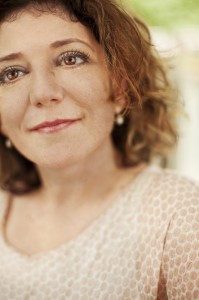
From Louisville. Live in Atlanta. Curious by nature. Researcher by education. Writer by practice. Grateful heart by desire.
Buy the Book!
The Stage Is On Fire, a memoir about hope and change, reasons for voyaging, and dreams burning down can be purchased on Amazon.


